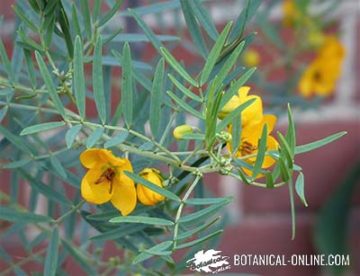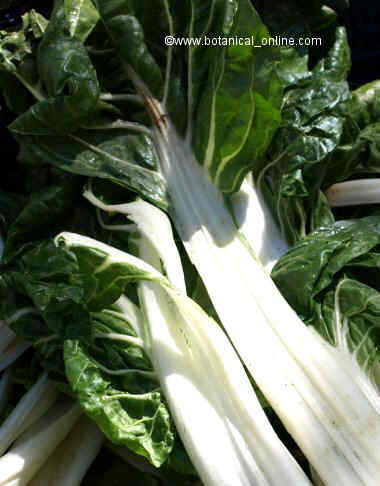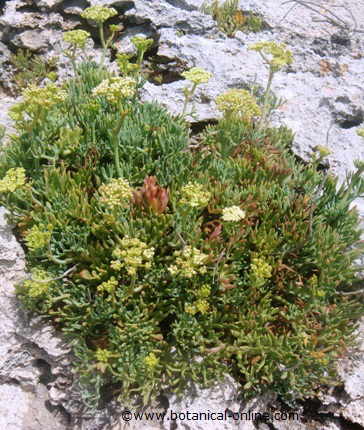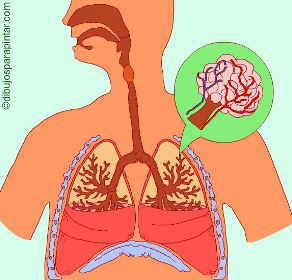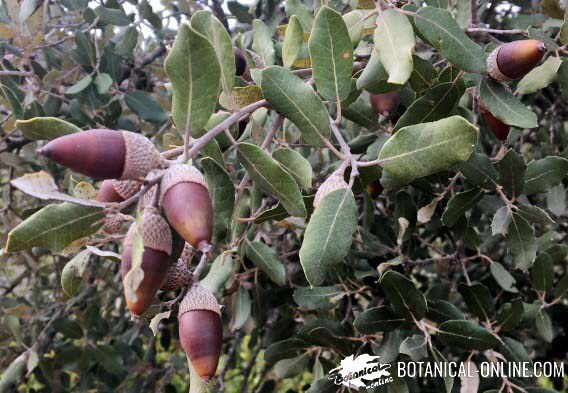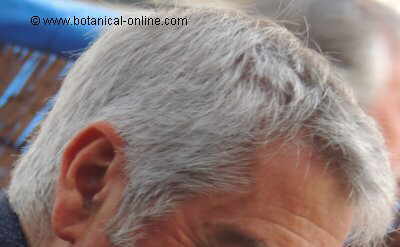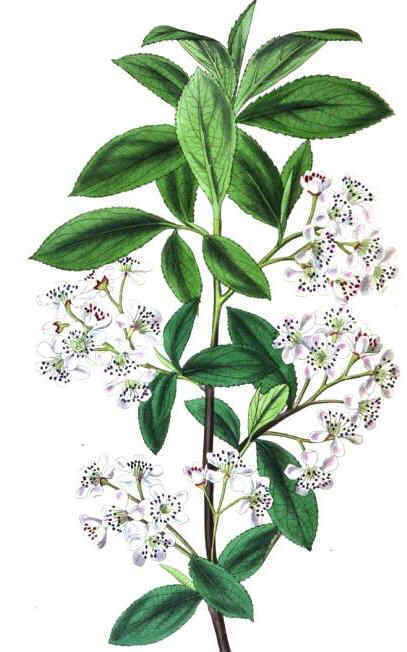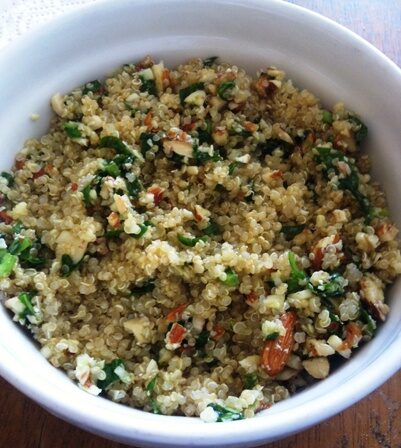DIFFERENT SPECIES OF CASSIA
Other species of Cassia
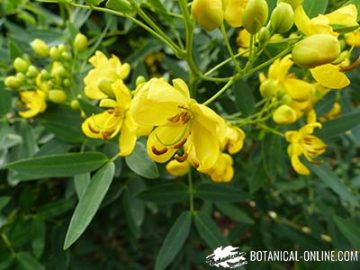
Besides senna (Senna alexandrina), Cassia genus comprises about 100 species of trees, shrubs and herbs from tropical and subtropical regions.
At present this genus is divided into two: Cassia and Senna. Some of these plants have similar properties to those viewed on the study of senna leaves (see ” cassia properties” in the listing below), others contain more extensive properties. Among the most commonly used are:
- Candle bush=candlestick senna = wild senna : (Cassia alata L.= Senna alata) It is a perennial shrub native to Suriname that normally reaches two meters in height but can reach up to 7.5 m. Its leaves are very long and has yellow flowers. The leaves have laxative, antimicrobial and antifungal properties, which have been widely used to cure skin problems, especially to combat ringworm (reason why it is also known as ringworm cassia) eczema, insect bites or to treat certain fungal infections such as athlete’s foot. A decoction with its seeds is prepared to eliminate intestinal parasites.

Photo of Senna artemisioides Yellow cassia: (Cassia siamea lam.) It is characterized by overhanging branches with inflorescences of yellow flowers. Coming from Southeast Asia, it is mainly used as a protection in areas subjected to heavy erosion in warm regions, because its ability to adapt to sandy soils and its rapid growth. Its tropical wood is prized for building poles. Because of its wide leaves, it is used as a tree which provides shade for coffee plantations. The abundance of flowers makes it valuable as a honey plant. It has been used as a laxative.
- Golden Shower Tree (Cassia fistula L.): Evergreen tree, from Egypt and India, that can grow to 18 m high at its place of origin, though, in cultivated species, it does not usually goes beyond 12 meters high. It has pinnate leaves and yellow flowers gathered in hanging inflorescences. The decoction of its bark and roots are used in Ayurvedic medicine for conditions such as pneumonia, fever, malaria, bronchitis and rheumatism. In folk medicine, it has been used to promote healing of burns and as softer purgative than Cassia acutifolia. Its fruits are edible and contain high amounts of potassium, calcium and iron. It also has a high calorific value.
- Pink shower, coral shower (Cassia grandis L. f.) Coming from the Amazon and very common in countries like Jamaica, Puerto Rico, Cuba or Hawaii, this is a tropical tree, very characteristic for its long pinnate leaves and salmon flowers. It has fruits in the form of cylindrical sheaths that can exceed 40 cm in length. They have a strong smell and a sweet taste and often remain on the tree throughout the year. Within these pods the seeds can be found surrounded by a pulp of very viscous brown and edible matter. To collect them, these trees are beaten with sticks.
It is often used as an ornamental tree in gardens of warm and rainy climate.
Besides its purgative properties. It is used for the preparation of soft drinks, and due to its iron content, for the treatment of anemia. The juice of the roots and leaves have antiseptic properties. In Colombia it is used to treat syphilis.
- Java Cassia (Cassia javanica L.): Coming from Southeast Asia, this evergreen tree can reach about 24 m in height at home. When grown, it does not usually exceed 12. It is characterized by its long pinnate leaves, covered with a thin youth hairiness. Its roots and pods were used as laxatives, but this remedy has been abandoned for being too emetic.
- “Neutral henna“/ Spain Henna (Cassia obovata) It is a perennial shrub about 60 cm high, with yellow flowers. Besides having laxative properties, it provides a natural dye that becomes part of Henna, with which African women color their hair. It seems that this component that provides color, helps to give strength and shine to hair. Neutral henna is very abundant in Senegal.
- Foetid cassia (Cassia tora L.). Annual shrub that reaches about 90 cm in height. It has yellow flowers and very thin fruits in pairs up to 2.5 cm long,. Because its seeds are very rich in proteins, it is used for feed composition in eastern countries, especially for feeding chickens or cows.
It has not very prominent laxative properties. The decoction of the leaves are used externally to treat skin diseases, especially itching or scabies. The leaves are applied as a poultice to reduce pain caused by sciatica or gout in internal use, leaves and fruits are used to lower cholesterol, hypertension or liver failure. The seeds of this plant are used in Cuba, where it is known as “guanine”, as a coffee substitute.
Other cassias are:
Cassia afrofistula Brenan)
Cassia acyphylla = Senna aciphylla
Cassia artemisioides = Senna artemisioides
Cassia auriculata L.
Cassia bakeriana Craib
Cassia corymbosa = Senna corymbosa
Cassia durangensis Rose
Cassia leptocarpa Benth
Cassia multijuga= Senna multijuga
Cassia roxburghii DC.
Cassia sophera L = Senna sophera
Cassia spectabilis DC.= Senna spectabilis
Cassia roxburghii DC
Cassia sturtii R. Br
Cassia surattensis Burm.f.
Cassia tomentosa= Senna multiglandulosa
![]() More information on cassia.
More information on cassia.

